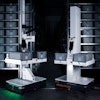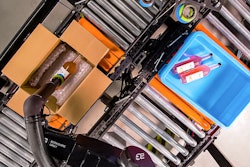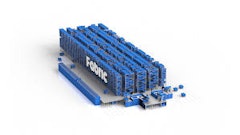
Micro-fulfillment is now an extremely important part of our retail industry in addition to the supply chains throughout the world. As e-commerce brings online shopping closer to the shopper, consumers demand faster shipping times with greater flexibility in product choice.
But what exactly is the difference between traditional warehousing and microfulfillment? The term “micro” in this concept is indicative of the smaller nature of these warehouses. But micro-fulfillment is not just scaling out an endless number of small warehouses. Instead, these smaller warehouses are placed strategically in densely populated areas or close to major routes to be closer to consumers and reduce delivery times. The goal is to reduce the length of the last mile, another growing industry in the supply chain.
Many retail stores now act as a micro-fulfillment center, instead of just a bricks-and-mortar shopping experience. Other microfulfillment centers are simply a smaller section of an existing facility, operated through a lease agreement.
 CB Insights
CB Insights
According to CB Insights, these centers offer lower overhead heads with a reduction of 75% and offer greater agility, meaning they can be built in just a few months, in addition to the faster last-mile benefits.
Major retailers like Amazon and Walmart pushed the growth of these micro-fulfillment centers, and online shopping certainly drives the trend forward. But the trend is now so common that it pops up in the grocery sector, as exhibited by the recent Instacart and Fabric joint venture.
The Instacart and Fabric partnership will allow grocery retailers in the United States and Canada to tap micro-fulfillment solutions through Instacart’s consumer-facing retail interface and personal shoppers with Fabric’s software and robotics systems.
Additionally, the pharma industry leans further into micro-fulfillment as consumers want more convenient ways to receive their healthcare. In a July earnings call from Walgreens, the pharmaceutical retailer revealed plans to introduce 11 new micro-fulfillment centers by the end of next year, after recently acquiring a portion of pharma tech developer iA.
As we come out of the pandemic, or possibly enter another wave of lockdowns, e-commerce will remain an integral part of the retail industry today and microfulfillment will only grow. We will see more smaller facilities pop up closer to the consumer instead of larger facilities in more rural areas. While the face of retail changes before our eyes, the supply chains must adapt as well and this is one of the many ways it is doing so.

















